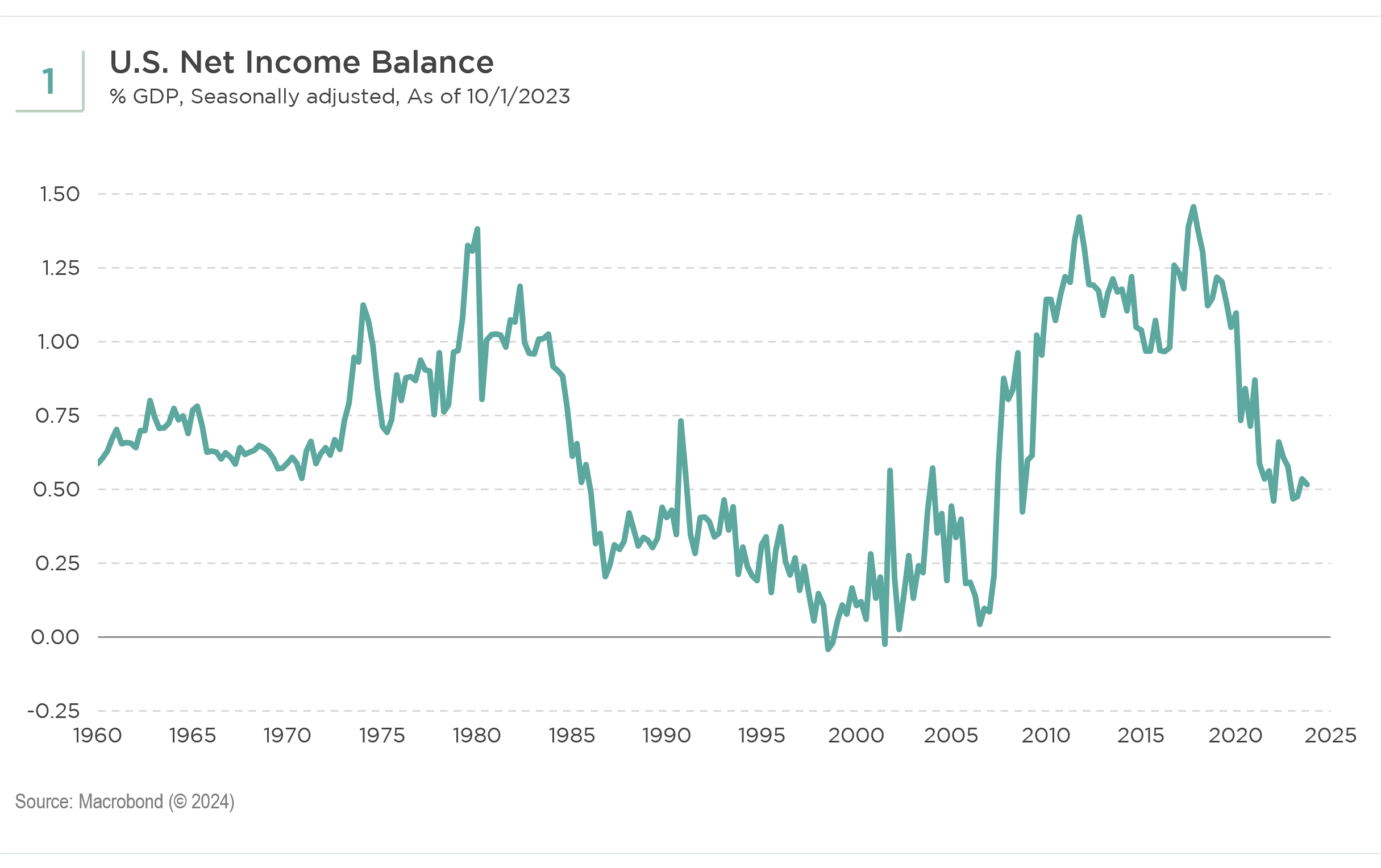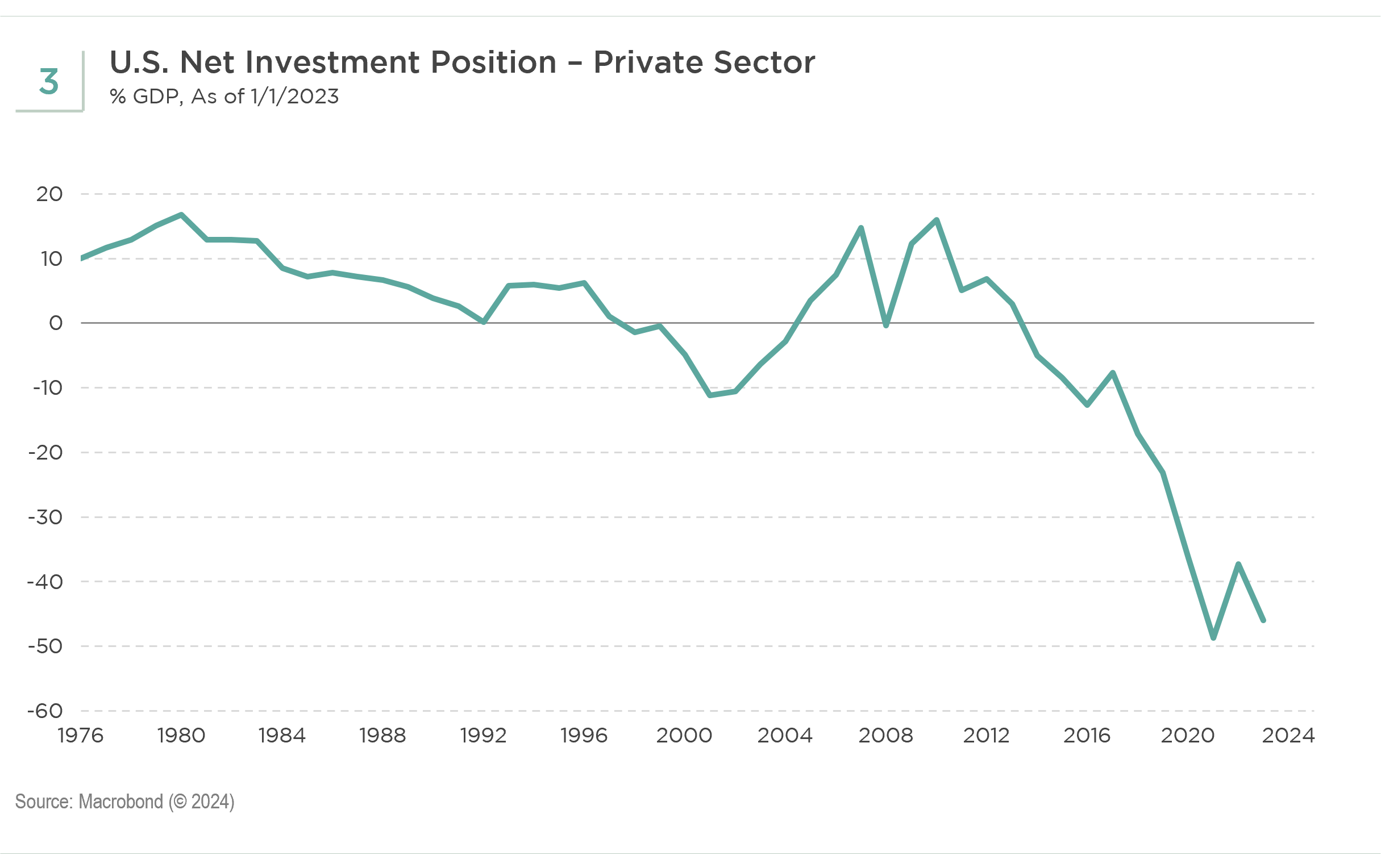During the 2000s, following the U.S. equity bear market and the rise of China, the U.S. private sector invested heavily overseas to capitalize on more attractive investment opportunities. Over time, this trend led to a substantial improvement in the U.S. net income balance—namely, the difference between what the U.S. earns on its investments overseas minus what it pays to foreign investors in U.S. assets (see Exhibit 1). While the U.S. remained a net debtor to the world in aggregate because foreign central banks still owned sizeable amounts of U.S. Treasuries, it became a sizeable net creditor to the private sector globally. For the purposes of understanding prospective capital flows and market implications, what matters are the decisions of private sector entities, and by 2012, the private sector held a sizeable short position in the U.S. dollar (USD).

From Net Short to Significant USD Long Position
Over the last decade, this trend has massively reversed. As I discussed in a recent podcast, it has been the U.S. that has experienced superior growth and asset market performance. On the one hand, the shifting economic model in China, characterized by lower leverage, a weaker property sector, and higher geopolitical risk, and the dual sovereign and banking crises in Europe lowered growth expectations in both regions. On the other hand, renewed technology leadership, resurgent manufacturing, and newfound energy independence via shale gas and oil raised U.S. growth expectations.
As a consequence, private sector capital flows have shifted significantly. Since 2010, foreign investment into the U.S. has surged, such that the net investment position of the U.S. private sector has swung from a $2 trillion (net) surplus to around an $11 trillion (net) deficit. Nearly $9 trillion of that change occurred over the past seven years (see Exhibit 2).

As a share of gross domestic product (GDP), the U.S. has shifted from overweighting foreign assets to the tune of 15% GDP to now underweighting foreign assets in the vicinity of 40% GDP. Alternatively, foreign investors have shifted from underweighting the U.S. by 15% GDP to overweighting U.S. assets by 40% GDP (see Exhibit 3).

This is not to say that investors are wrong in favoring U.S. assets. Investors’ overweight exposure to U.S. assets may well be justified if the U.S. continues to offer better returns on investments than those offered in other parts of the world. Indeed, recent U.S. growth and equity outperformance is validating the overweight position.
However, the point here is that investors are already heavily positioned for U.S. growth and asset market outperformance, a dramatic change from investor positioning in 2010. The margin for error for the U.S. is now much, much lower—if the U.S. economy and markets disappoint, there are now trillions of dollars that could exit U.S. markets.
Groupthink is bad, especially at investment management firms. Brandywine Global therefore takes special care to ensure our corporate culture and investment processes support the articulation of diverse viewpoints. This blog is no different. The opinions expressed by our bloggers may sometimes challenge active positioning within one or more of our strategies. Each blogger represents one market view amongst many expressed at Brandywine Global. Although individual opinions will differ, our investment process and macro outlook will remain driven by a team approach.



 Download PDF
Download PDF
